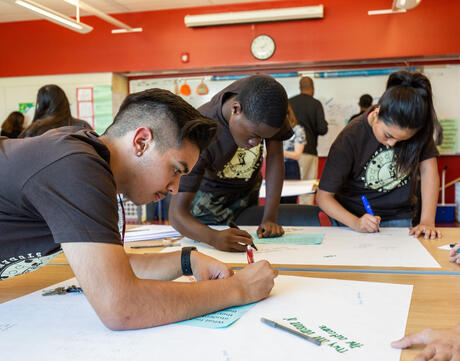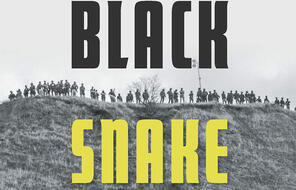As human beings, our need to connect, to find our place within groups and communities, is fundamental. Professor of psychology Geoffrey Cohen explains: “Belonging is the feeling that we’re part of a larger group that values, respects, and cares for us—and to which we feel we have something to contribute. The word ‘belong’ literally means ‘to go with,’ and our species has evolved to journey through life with each other.”
This need for connection, to figure out where and how we belong, takes on special importance during middle and high school, especially now when “one in five Americans suffers from chronic loneliness, with a 2020 survey revealing that young adults suffer the most.”
Today we’re excited to introduce our second English Language Arts collection, Borders & Belonging, which surfaces themes of belonging and the many borders that can shape it as an antidote to loneliness. Exploring these themes in the classroom provides students the opportunity to be supported, heard, and understood.
This collection includes professional learning, engaging and accessible introductory lessons, a text set with exciting contemporary voices, a unit planning guide, and more. We hope these tools will inspire you and support you in planning and implementing a unit that invites students to explore the complicated world of belonging, and the many borders that can shape it.
- Prepare to Teach: Engage with the collection’s themes by watching one or more short videos with Richard Blanco or our webinar with YA authors Randy Ribay and Malaka Gharib. You can find the videos on the Borders & Belonging page.
- Build Students’ Schema: The introductory lessons, What Is Belonging? and How Do Borders Shape Belonging?, develop students’ conceptual understanding of the collection’s themes and prepare them to engage more deeply with a text set and/or a literature unit.
- Teach a Two-Week Text Set: The first text set in the collection, From Fitting In to Belonging: Understanding the Forces That Shape Belonging, invites students to grapple with the essential questions: “What are the forces that shape belonging? and How can we reduce barriers to belonging for ourselves and others?” (Grades 7-8). We will be adding two additional text sets for grades 9-10 and 11-12 this year!
- Go Deeper with a Book Unit: With everything you need to plan and implement a Facing History book unit, our updated Unit Planning Guide includes 14 essential questions and 26 journal prompts to support a Borders & Belonging unit.














